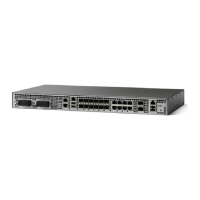CHAPTER 6
Configuring SNCP on 1-Port OC192/STM-64 or
8-Port OC3/12/48/STM-1/-4/-16 Module
SNCP is a protection mechanism for SDH networks that enables SDH connections to switch to another SDH
circuit when a circuit failure occurs. A protection interface serves as the backup interface for the working
interface. When the working interface fails, the protection interface quickly assumes its traffic load.
The SDH protection schemes comply with GR-253 and ITU-T G.783. It allows Optical Interface Module
to work seamlessly as SDH Add or Drop Multiplexers (ADMs). The implementation of the above protection
schemes allows a pair of SDH lines or paths to be configured for line or path redundancy. In the event of a
fiber cut, the active line or path switches automatically to the standby line or path up to 60 milliseconds
(2/5/10 millisecond for holdover and 50 millisecond switchovers).
Optical Interface Module supports the following SDH protection switching schemes:
•
SNCP Path Protection at STS Level
•
SNCP Path Protection at VT Level
•
Restrictions for SNCP, page 125
•
SNCP Path Protection, page 125
•
Configuring SNCP, page 126
•
Verification of SNCP Configuration, page 127
Restrictions for SNCP
SNCP is not supported on port 8 of the IM with STM-64 rate configured.
SNCP Path Protection
SNCP is a unidirectional network with two rings, one ring used as the working ring and the other as the
protection ring. The same signal flows through both rings, one clockwise and the other counterclockwise. It
is called SNCP because monitoring is done at the path layer. A node receives two copies of the electrical
signals at the path layer, compares them, and chooses the one with the better quality. If part of a ring between
1-Port OC-192 or 8-Port Low Rate CEM Interface Module Configuration Guide, Cisco IOS XE Everest 16.7.x (Cisco
ASR 900 Series)
125

